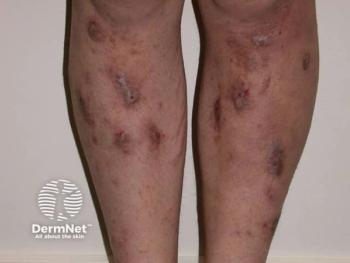
Light-listening device could transform skin disease detection
The future of skin cancer and other disease detection could change with the development of a photonics device that listens to light.
The future of skin cancer and other disease detection could change with the development of a photonics device that listens to light.
âWe are essentially listening to light, allowing us to see not just structures but molecules and biology on and under the skin, at depths and contrast never visualized before. It will enable physicians to make accurate and objective diagnosis of skin conditions for the first time,â Professor Vasilis Ntziachristos, M.Sc., Ph.D., INNODERM coordinator and chair for biological imaging at the Technical University of Munich says in an INNODERM press release.
The new device, called Multi-Spectral Optoacoustic Mesoscopy (MSOM), sends short light pulses to the skin and detects ultrasound waves generated in response to light absorption by skin molecules and structures. Tomographic analysis of the ultrasound waves can reveal unprecedented volumetric views of skin constituents and disease manifestations at resolutions and depths never reached before by an optical method. Then, by using light pulses at different colors, accurate spectroscopic information is revealed not only for morphological, but also biochemical features of skin, providing accurate and specific diagnostic information.
Using opto-acoustics, the device delivers light waves of different wavelengths to the skin and detects ultrasound waves generated in response to the light absorption. Tomographic analysis of the ultrasound waves reveal volumetric views of the skinâs tissue and specific molecules, as well as disease manifestations. The resolutions and depths possible with the device surpass optical methods. Different colored light pulses reveal what seems to be accurate spectroscopic information for morphological and biochemical skin features, according to press materials.1
The prototype photonics device visualizes at depths up to 5mm beneath the skin and measures an area 4cm by 4cm by 7cm. When placed on the skin, it generates a high-resolution image in less than a minute. Itâs portable and could be used in remote areas of the world to make accurate, objective diagnoses, according to the release.
âThe device allows us to see blood vessels, skin oxygenation and potentially several novel pathophysiological features, which are an integral area in the development of diseases,â Dr. Ntziachristos says.
Researchers will investigate the MSOM device in dermatological conditions, including cosmetics, hair growth and restoration and cancer-related surgery.
Disclosure: The Photonics Public Private Partnership, or Photonics PPP (
Reference:
1 Physicians and engineers develop novel optoacoustic device for earlier non-invasive skin cancer diagnosis.
Newsletter
Like what you’re reading? Subscribe to Dermatology Times for weekly updates on therapies, innovations, and real-world practice tips.


















